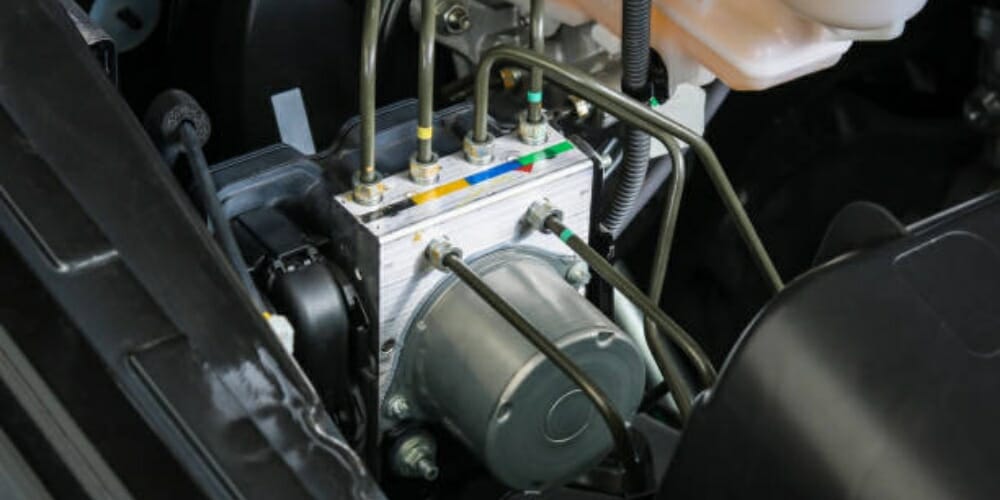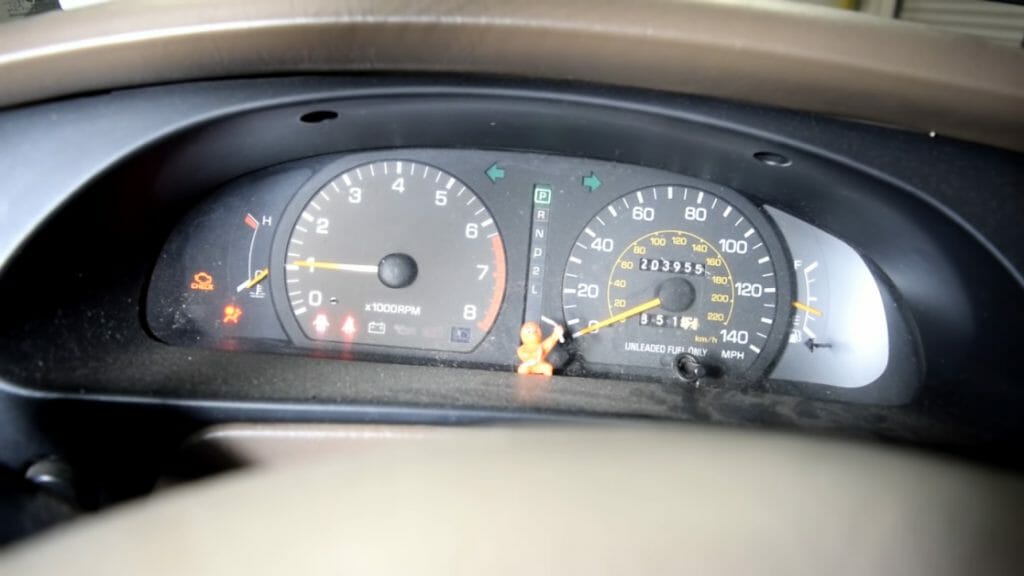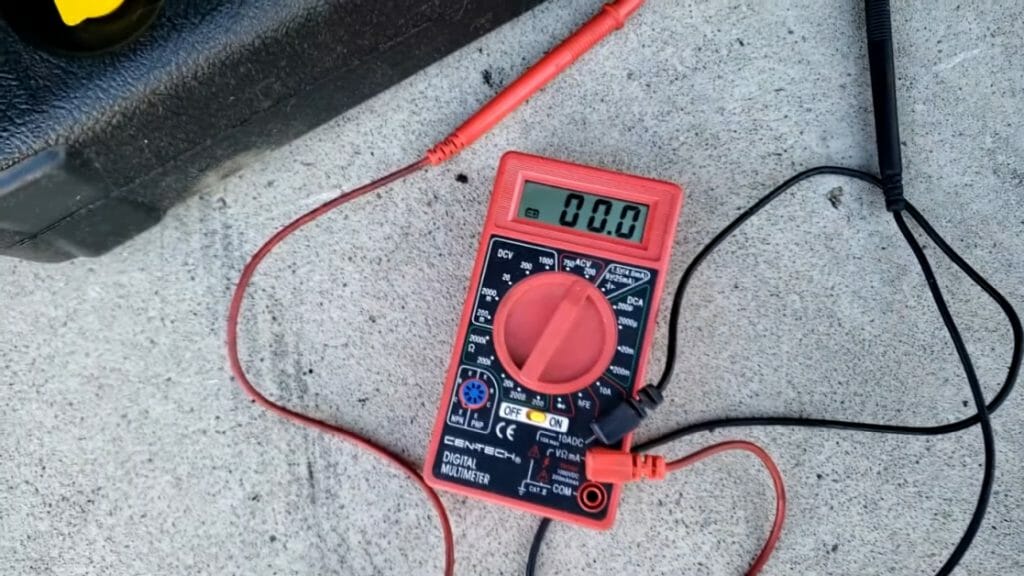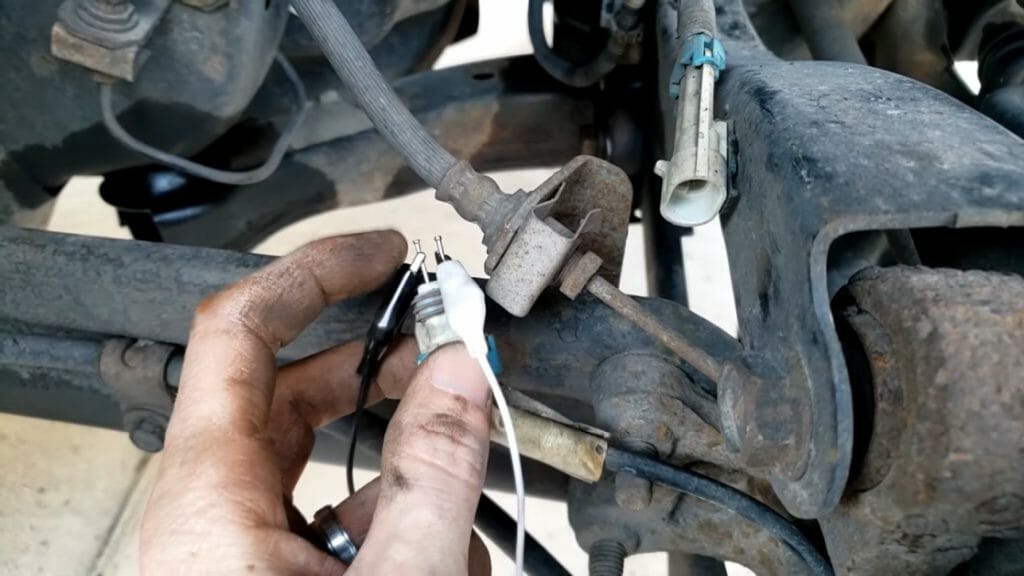How to Test an ABS Sensor with a Multimeter (Guide)

An ABS (anti-lock brake sensor) is a tachometer that measures the rapidity of a wheel. It then passes the calculated rotational speed to the Engine Control Module (ECM). The ABS is also known as the wheel speed or brake sensor. Every car wheel has its rotational speed; the ABS sensor notes these speed rates.
On receiving the wheel speed reports, the ECM determines the locking-up status for each wheel. ECM locking-up mechanisms cause a sudden grinding noise on the breaks.
If your car’s ABS is faulty, you may lose electronic stability and traction control. It is thus dangerous to drive a car without knowing the condition of your ABS sensor.
Test your ABS sensor to see if the traction and sensor light appear on the car dashboard.
To test an ABS Sensor, you need to set the multimeter probes to the electric connectors. Then, you need to spin your car wheels to get the voltage reading. If there are no readings, your ABS sensor either has an open circuit or is “dead.”
I will go into more detail in our article below.

ABS sensors are among the most commonly used sensors in cars. The ABS is found in the wheel hub for a new braking system. For a traditional brake system, it is located outside of the wheel hub – in the steering knuckle. It is coupled with a ring gear mounted on a broken rotor.
When to Test an ABS Sensor
The sensors and the traction control light up when an ABS Sensor detects a fault. You should keep track of these sensor-fault indicators on your dashboard when driving. The traction light is conveniently positioned on your dashboard.
What You Need to Have During an ABS Sensor Test

- A digital Multimeter
- Clips (optional; you use the probes alone)
- Tire jacks
- ABS reading kit to help you read the ABS codes and know which one needs replacement
- A wrench
- Floor carpets
- Brake set tools
- Ramps
- Battery charger
I prefer digital multimeters because they give the values or readings on the screen. Analog ones use pointers; hence, you must do some calculations.
How to Test an ABS Sensor: Get Your Readings
A multimeter has 3 main parts, namely: the display, selection knob, and ports. The display often shows 4 digits and can also show negative readings.
Turn the selection knob to select the unit you want to measure. It could be current, voltage, or resistance.
A multimeter has 2 probes, labeled COM and MAV, plugged into its ports.
The COM is often black and connected to the circuit’s ground.
The MAV resistance probe could be red and is connected to the current reading.

Follow these simple steps to test all ABS sensors using a multimeter. Don’t forget to check your manual to see how many wheels have an ABS sensor and check all the sensors.
Note their standard Ohms value.
Here are the steps:
- Park your car and ensure the transmission is in the “park or neutral” mode before you turn off your engine. Then, set your emergency brakes.
- Use the jack to lift the wheel near the sensor you want to test. Before doing this, spread a mat on the floor under the car, where you can lie down and perform the repair work conveniently. Don’t forget to have your protective gear on.
- Disconnect the ABS sensor from the connecting wires by safely removing its cover. Then, clean it with brake-cleaner fluid (the sensor is canister-like and has connecting wires).
- Set your multimeter to Ohms. But firmly adjust the knob to point to the Ohms setting. A “Ω” symbol denotes the Ohm or resistance.
- Set your multimeter to display zero by stably turning the zero-adjust knob.
- Put the probe leads on the ABS sensor pins. Since resistance is not directional, it does not matter which end you put each probe. But keep them as far as possible to get the correct reading. Wait to get a consistent value.
- Note the Ohms readings. Compare it with the standard Ohms value of your sensor from the manual. The difference should be less than 10%. Otherwise, you have to replace your ABS sensor.
Alternatively, you can set your multimeter to the voltage reading (AC) mode.
Connect the probes to the ABS sensor and spin the wheel to get a voltage reading.
If there’s no value on your multimeter display section, then your ABS is faulty. Replace it.
Protective Gear
You have to interact a lot with grease and heat. So, gloves will prevent grease from penetrating your fingernails. The thick gloves prevent your hands from getting burnt and cut from objects like wrenches and jacks.
You will also do some hammering. During this, a lot of particles will blow up in the air. So, it is important to have eye protection. You can wear a screen guard or sensible eyeglasses.
Wrapping Up
It’s important to track the condition of your ABS sensor for safe driving. Now we know that the appearance of traction and a sensor light on the dashboard, along with no reading on your multimeter display panel, means the ABS Sensor is faulty. Sometimes, you may get a multimeter reading, but the traction and sensor light persists. In such a case, you need the help of a technician.
References
Website Resources:
- cars. https://cars.usnews.com/cars-trucks/car-brands-available-in-america
- driving. https://www.britannica.com/technology/driving-vehicle-operation
Video References:
TutorialGenius.com
Ratchets And Wrenches
